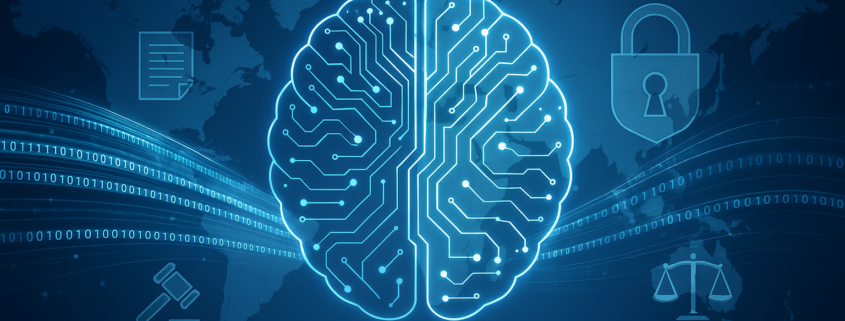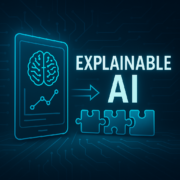Privacy in the Age of AI: Global Regulations Businesses Must Know
Artificial intelligence has swiftly become the backbone of modern business. From personalized recommendations to automated hiring tools. But with this power comes a growing regulatory storm. Around the world, governments are rewriting privacy laws to keep pace with AI’s capabilities—and businesses are caught in the middle.
So how can your business thrive in this new era without stumbling into regulatory traps?
Let’s explore how privacy laws look across three crucial regions—the United States, the European Union, and China—and what practical steps businesses should take to stay compliant.
Why AI Raises the Privacy Stakes
AI doesn’t just analyze numbers—it processes vast amounts of personal data to draw predictions about individuals. That can mean:
Automated decision-making affecting someone’s credit score, job prospects, or health services.
Use of large datasets that might include sensitive personal details.
Systems whose logic can be a “black box,” making transparency difficult.
These realities push privacy laws into new territory, demanding that businesses disclose more, minimize data use, and often give individuals the right to challenge AI-driven decisions.
Europe: The GDPR and the New EU AI Act
GDPR (General Data Protection Regulation)
Europe has long led the world on privacy regulation. The GDPR, in effect since 2018, governs how personal data is collected, used, and stored.
Key GDPR principles relevant for AI:
Transparency: Companies must tell individuals if they’re subject to automated decision-making and explain the logic behind it (Articles 13-15).
Automated decision-making restrictions (Article 22): Individuals have the right not to be subject to decisions solely based on automated processing that have significant effects, unless:
it’s necessary for a contract,
authorized by law,
or based on explicit consent.
Data minimization: Only collect data that’s necessary for the specific purpose.
Right to explanation: While not explicitly worded as a “right” in the GDPR, Recital 71 and regulator guidance require businesses to provide meaningful information about how automated decisions are made.
Penalties can reach €20 million or 4% of global annual revenue.
✅ Real example: In 2023, Spotify was fined about €5 million by Sweden’s regulator for failing to adequately explain how algorithms processed user data for music recommendations.
The Upcoming EU AI Act
Europe is also pioneering AI-specific regulation. The EU AI Act, passed by the European Parliament in 2024 and expected to be fully enforced in late 2025, will be the world’s first comprehensive AI law.
Under the AI Act:
AI systems are classified by risk:
Unacceptable risk → banned (e.g., social scoring).
High-risk systems → strict compliance required (e.g., hiring algorithms, credit scoring).
Limited risk → transparency obligations (e.g., chatbots must disclose they’re AI).
Minimal risk → few obligations (e.g., spam filters).
High-risk systems must:
Undergo risk assessments.
Maintain technical documentation and logs.
Allow human oversight.
Provide transparency about AI logic.
Fines can be up to €35 million or 7% of global turnover.
Businesses operating in Europe need to map out their AI systems now to see if they fall under “high-risk.”
United States: A Patchwork of State Laws
Unlike Europe, the U.S. still has no single federal privacy law. Instead, businesses face a growing patchwork of state-level rules—many of which are starting to tackle AI-specific concerns.
California (CCPA / CPRA)
The California Consumer Privacy Act (CCPA) went into effect in 2020.
The California Privacy Rights Act (CPRA), effective 2023, strengthened protections.
New draft regulations propose:
Giving consumers the right to know about and opt out of certain automated decision-making, especially decisions that significantly affect them.
Important: these draft regulations are still not final as of mid-2025, so businesses must monitor developments closely.
Colorado, Virginia, and Other States
Other states like Colorado, Virginia, Connecticut, Utah, Texas, Oregon, and Montana have passed their own laws.
Common themes:
Consumers have rights to know, access, delete, or correct personal data.
Many states regulate profiling—AI-driven decisions with significant legal or economic impact.
Colorado, for example, requires businesses to conduct data protection assessments for profiling activities.
Compared to Europe, U.S. laws generally:
Provide fewer rights around automated decision-making.
Focus more on transparency and opt-out mechanisms.
Impose lower penalties—but the reputational risk can still be huge.
China: The PIPL Takes a Hard Line
China’s Personal Information Protection Law (PIPL), effective since November 2021, is the country’s first comprehensive privacy law. It’s often described as “China’s GDPR,” though it’s stricter in some ways.
Key PIPL features:
Requires explicit consent for collecting and using personal data.
Introduces strong protections for sensitive personal information, including biometric and health data.
Mandates that businesses provide explanations for automated decision-making if it significantly impacts individuals.
Places tight restrictions on cross-border data transfers.
Fines can reach RMB 50 million or 5% of a company’s annual revenue.
China’s law signals the government’s determination to keep both businesses and foreign tech giants in check.
Comparing the Regions: What’s the Same and What’s Different?
| Aspect | EU (GDPR + AI Act) | US (State Laws) | China (PIPL) |
|---|---|---|---|
| Automated Decisions | Strict limits; right to human review | Mostly transparency and opt-out rights | Requires explanations for significant impacts |
| Transparency | Mandatory explanations for AI logic | Growing focus, especially in California | Clear consent and explanation rules |
| Risk Approach | AI systems classified by risk | No unified risk framework | Emphasis on “significant impacts” |
| Cross-Border Data | Strict transfer rules | Fragmented rules; few restrictions | Very strict controls on data leaving China |
| Penalties | Up to 4–7% of global turnover | Lower fines, but rising | Up to 5% of turnover |
Practical Steps for Businesses
Here’s how businesses can get ahead of the regulatory curve:
✅ Map Your AI Systems
Identify AI tools, what data they use, and whether they make significant decisions.
✅ Review Privacy Policies
Update them to explain AI use, especially if decisions affect individuals.
✅ Conduct Impact Assessments
Required under GDPR and many state laws for significant processing.
✅ Implement Human Oversight
Ensure humans can review or override AI decisions where legally required.
✅ Document Your AI
Keep records of:
Training data sources
Model logic summaries
Bias and fairness testing
✅ Minimize Data Collection
Only collect what’s necessary for your AI’s purpose.
✅ Track Legal Changes
Assign staff or advisors to monitor evolving regulations.
The Bottom Line
AI is transforming business—but it’s also transforming how privacy laws are written and enforced. The EU, U.S., and China are each carving out unique regulatory paths, but they share a common goal: ensuring that AI systems don’t harm individuals’ rights.
Businesses that invest now in transparency, documentation, and human oversight won’t just avoid fines—they’ll earn trust in a world that’s growing wary of “black box” algorithms.
Because in the age of AI, privacy isn’t just compliance—it’s a competitive advantage.






Leave a Reply
Want to join the discussion?Feel free to contribute!